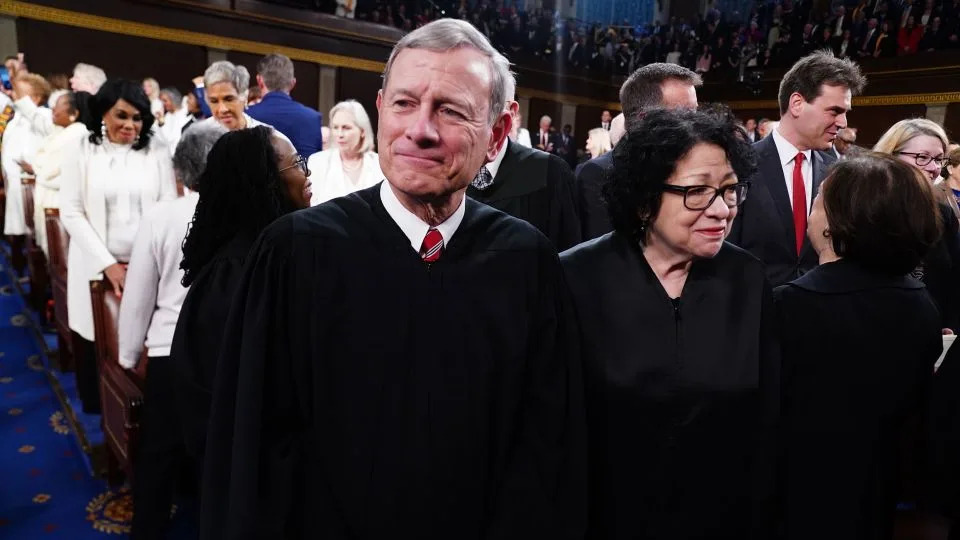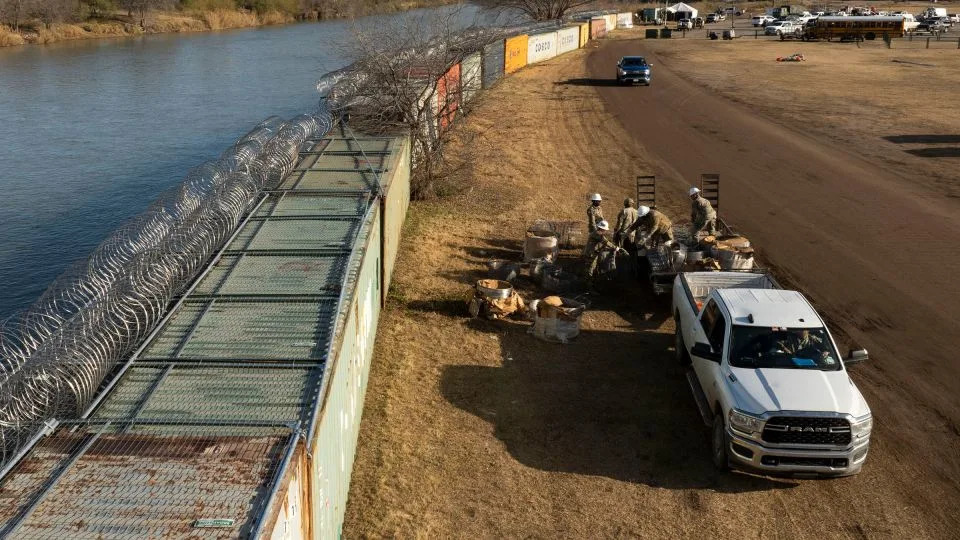CNN
Supreme Court slow to resolve potentially election-altering cases as justices inch toward final arguments
John Fritze, CNN – April 6, 2024
As the Supreme Court turns toward a series of politically charged disputes in its final arguments later this month, it is wrestling with a backlog of controversies on guns, elections and transgender rights that will thrust its conservative majority into the middle of another turbulent presidential contest.
Up ahead are arguments over whether former President Donald Trump may claim immunity from criminal prosecution on election subversion charges and a roiling fight between President Joe Biden and Idaho over whether hospitals must perform an abortion when the health of a pregnant woman is threatened – the second of two blockbuster abortion cases the court must decide this year.
But as the high court moves toward a busy and fraught final sitting this term, it is also once again slipping behind its past pace, issuing fewer opinions than it did at this same point in its nine-month work period just a few years ago. The court has handed down 11 opinions so far this term – most in relatively obscure matters that were decided unanimously.
The Supreme Court has issued opinions in just 22% of its argued cases this year, compared with 34% through mid-April two years ago and 46% in 2021, according to data compiled by Adam Feldman, founder of Empirical SCOTUS. The share of resolved cases is up slightly over last year – a historic low.
The comparison would improve if new rulings land next week.
Taken together, the numbers point to a term in which the court’s decisions could be scrunched into a shorter time fame – potentially giving the court’s 6-3 conservative supermajority an opportunity to reshape the political debate around culture war issues just as Americans begin tuning into the Biden-Trump rematch for president.
Erwin Chemerinsky, dean of the University of California Berkeley School of Law, said it had become a “clear trend” in recent years that the court is “very slow” releasing decisions. Though there are many theories about why that may be, the court’s opaque-by-design practice of negotiation and opinion crafting makes it difficult to say with certainty.
A large share of the court’s docket touches on “enormously significant and difficult issues,” Chemerinsky told CNN. “It also is a court that has deep divisions. I assume that all of this leads to delays in releasing decisions.”
Writing a majority opinion is only part of the behind-the-scenes process: Sometimes delays are caused by the concurrences and dissents other justices write. More fractured decisions, in other words, can generate separate opinions and take longer.
The slower pace could prove particularly meaningful this year because of Trump’s assertion of immunity from special counsel Jack Smith’s election subversion charges. Trump asked the justices to block a lower court ruling that flatly rejected those immunity claims. The high court agreed to hear the case in late February, but did not set arguments until the end of this month.
The case has put the Supreme Court on the clock and opened it up to criticism that delay will play into Trump’s broader legal strategy of pushing off his pending criminal trials until after the November election. Unless the court speeds up its work, it’s difficult to see how the Trump immunity decision would arrive before the end of June.

Trump redefines Supreme Court’s docket
The court heard oral arguments in mid-October over South Carolina’s new congressional map, which a lower court found was a racial gerrymander that violated the Constitution. Both the GOP state lawmakers defending the map and the parties challenging it had asked the Supreme Court to rule by January.
Nearly six months after the court signaled during arguments that it was prepared to uphold the map, it has issued no opinion.
Noting that deadlines for this year’s election were nearing, the state lawmakers filed an emergency appeal last month, asking for permission to use the disputed map while the justices continued their deliberations. Ultimately, a lower court stepped in to allow the state to use the map for now, lamenting that “the ideal must bend to the practical.”
In early November, the court heard arguments over a federal law that bars people who are the subject of domestic violence restraining orders from possessing guns. Days earlier it heard a First Amendment appeal from a political activist who wants to trademark the suggestive phrase “Trump Too Small” for use on T-shirts.
On the court’s emergency docket, meanwhile, where cases are decided more quickly and without oral argument, the justices have been sitting for weeks on a request from Idaho officials to enforce a strict statewide ban on gender-affirming care for minors. Initially filed in mid-February, the request has been fully briefed since early March.
The go-slow approach is not a new phenomena this year. The pace of opinions fell sharply last year, according to Feldman’s data, which led to speculation that the shocking leak of the court’s draft opinion overturning Roe v. Wade months earlier gummed up the court’s internal works.
Several justices indicated the leak damaged trust, including Justice Clarence Thomas, who described the unprecedented breach as “kind of an infidelity.”
Last year, Justice Brett Kavanaugh downplayed the slower pace by noting many of the court’s biggest cases – which usually are not settled until June – were heard at the start of the term. For instance, the court heard arguments early on that year in a major challenge to the consideration of race in admissions at Harvard and the University of North Carolina. The Supreme Court ultimately barred consideration of race in June.
This year, some of the biggest cases have been more spread out. On the other hand, the court has been pummeled by a series of divisive emergency appeals. It also has agreed to take on several high-profile matters involving Trump.
In one, the court ruled that Trump would remain on Colorado’s presidential ballot despite claims he violated the 14th Amendment’s “insurrectionist ban” because of his actions leading up to the January 6, 2021, attack on the US Capitol. The court was unanimous on the bottom line conclusion but splintered over its reasoning.
In another, the justices agreed to hear arguments April 25 about Trump’s immunity claims.

The Supreme Court will also hear arguments later this month over a federal law the Biden administration says requires hospitals to provide an abortion if the health of the mother is in danger, even in states such as Idaho that have approved strict abortion bans. The rise of state abortion restrictions following the court’s overturning of Roe has become an election-year cudgel for Biden and congressional Democrats.
Also this month, the court will take up the question of whether a federal obstruction law can be used to prosecute some of the rioters involved in the Capitol attack. The decision could also affect Trump, who has also been charged with that crime.
‘Something has to give’ on Supreme Court docket
The court also dealt with a divisive and ongoing dispute over a Texas immigration law that allowed law enforcement in the state to arrest and detain people it suspects entered the country illegally. Over a public dissent from the three liberal justices, the court cleared the way for Texas to enforce that law last month.
The 5th US Circuit Court of Appeals temporarily blocked the enforcement hours later and the appeals court heard arguments over the law Wednesday.
The emergency cases, which have drawn increased criticism in recent years, take time away from consideration of the court’s regular docket.
“The court only has so many resources,” said Steve Vladeck, CNN Supreme Court analyst and professor at the University of Texas School of Law. “Something has to give, and the court really ought to be thinking through ways to avoid putting itself in this position every year.”

At the same time, the Supreme Court has always moved at its own pace and the justices have little incentive to worry about timing. By its own standards, the court moved unusually quickly to resolve the Trump ballot dispute this year – handing down a decision two months after the former president filed his appeal.
That kind of speed is the exception.
“If you look systematically over time, they’re becoming slower and they’re taking fewer cases,” Feldman said.
But other than stirring speculation among court watchers, he said, the pace of opinions doesn’t have much practical impact. Taking an extra few weeks to finish an opinion, Feldman said, simply means the justices get more time to write.
“It makes sense to me from their perspective that they might want to be slower,” Feldman said. “For efficiency, it probably makes sense to hold off as much as they can until the end of the term.”
